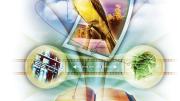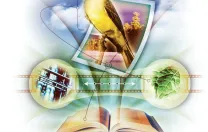The arts and humanities have potentially crucial contributions to make toward full understanding of the multiple, accelerating environmental challenges facing the world today.
To take a simple example from one of modern environmentalism’s comparative success stories: How does one transform a “swamp”—a boggy impenetrable tract of no seeming use except when drained for tillage or building sites—into a “wetland” considered worthy of preservation, intrinsically valuable, and even beautiful in its own way? Obviously, such a shift, which has taken place only during the past half-century, requires a fundamental transformation of taste and values as well as scrupulous scientific research, protracted advocacy and litigation, careful legislation, and administrative implementation. A mere glance at guidebooks like the National Audubon Society’s Wetlands that line the shelves of the nature section of a typical American bookstore confirms the importance of narrative and image in helping to bring about and to solidify that transformation of values. These two approaches each have distinctive, though often overlapping, contributions to make. Narrative can both define and underscore the gravity of actual or possible events by means of plotlines involving characters the reader or viewer is made to care about intensely. For example, the sport-hunting industry used to complain that the worst thing that ever happened to it was Bambi—an antiwar novel of the 1920s made into a more famous Disney film on the verge of World War II in which many of the appealing forest creatures are killed by ruthless hunters. Freestanding images or sequences of images, often used in combination with narrative, can capture and preserve—in such a way as to make the viewer also want to preserve—endangered landscapes and regions. If restrictions on oil drilling in northern Alaska should continue, much of the credit will need to go to the power of film, photography, and TV nature specials to instill in the American public, few of whom will ever visit the region personally, indelible images of this region’s importance as the last unspoiled national wilderness. How a place gets imaged, what stories about it get told, how they are remembered—all this can clearly make a difference not just aesthetically but historically, for public values and behavior.
Adapted from The Harvard Sampler: Liberal Education for the Twenty-First Century, edited by Jennifer M. Shephard, Stephen M. Kosslyn, and Evelynn M. Hammonds, to be published October 2011 by Harvard University Press. Copyright © 2011 by the President and Fellows of Harvard College. All rights reserved.
From “American Literature and the American Environment: There Never Was an ‘Is’ without a ‘Where,’” by Lawrence Buell, Cabot research professor of American literature. For many years, he taught Literature and Arts A-64, later Aesthetic and Interpretive Understanding 22, “American Literature and the American Environment.”







